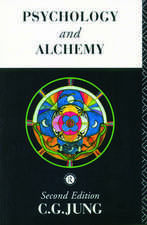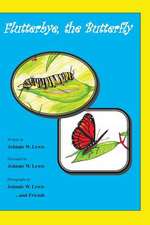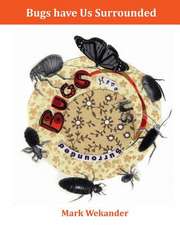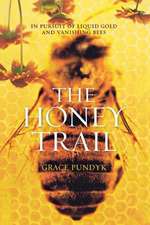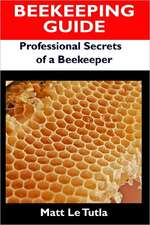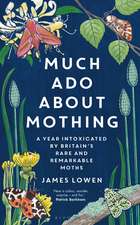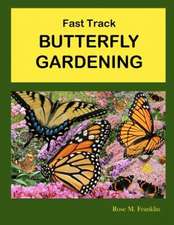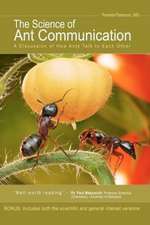Moth: Animal
Autor Matthew Gandyen Limba Engleză Paperback – 14 iul 2016
Unlike their gaudy day-flying cousins, moths seem to reside in the shadows as denizens of the night, circling around streetlights or caught momentarily in the glare of headlights on a country lane. As Matthew Gandy demonstrates in this book, however, there are many more species of day-flying moths than there are butterflies, and many rival butterflies in a dazzling range of markings.
Gandy shows that the study of moths formed an integral part of early natural history. Many thousands of drawings, paintings, and physical specimens remain in museum collections, and in recent years there has been a renewed surge of interest facilitated by advances in digital photography, the internet, and new cartographic projects that have enabled direct collaboration between amateur experts and scientific research projects. He explores the rich history of vernacular names, which speaks to a significant place for moths in early cultures of nature. Names such as the Merveille-du-Jour, the Green Brindled Crescent, or the Clifden Nonpareil evoke a sense of wonder that connects disparate fields such as folklore, the history of place, and early scientific texts. With wingspans ranging in size from a few millimetres to nearly a foot, moths display an extraordinary diversity of evolutionary adaptions, which Gandy captures here.
Gandy shows that the study of moths formed an integral part of early natural history. Many thousands of drawings, paintings, and physical specimens remain in museum collections, and in recent years there has been a renewed surge of interest facilitated by advances in digital photography, the internet, and new cartographic projects that have enabled direct collaboration between amateur experts and scientific research projects. He explores the rich history of vernacular names, which speaks to a significant place for moths in early cultures of nature. Names such as the Merveille-du-Jour, the Green Brindled Crescent, or the Clifden Nonpareil evoke a sense of wonder that connects disparate fields such as folklore, the history of place, and early scientific texts. With wingspans ranging in size from a few millimetres to nearly a foot, moths display an extraordinary diversity of evolutionary adaptions, which Gandy captures here.
Din seria Animal
-
 Preț: 90.11 lei
Preț: 90.11 lei -
 Preț: 88.71 lei
Preț: 88.71 lei -
 Preț: 88.71 lei
Preț: 88.71 lei -
 Preț: 89.18 lei
Preț: 89.18 lei -
 Preț: 87.66 lei
Preț: 87.66 lei -
 Preț: 88.29 lei
Preț: 88.29 lei -
 Preț: 88.71 lei
Preț: 88.71 lei -
 Preț: 89.55 lei
Preț: 89.55 lei -
 Preț: 94.07 lei
Preț: 94.07 lei -
 Preț: 88.71 lei
Preț: 88.71 lei -
 Preț: 88.71 lei
Preț: 88.71 lei -
 Preț: 89.18 lei
Preț: 89.18 lei -
 Preț: 89.18 lei
Preț: 89.18 lei -
 Preț: 88.71 lei
Preț: 88.71 lei -
 Preț: 89.00 lei
Preț: 89.00 lei -
 Preț: 89.49 lei
Preț: 89.49 lei -
 Preț: 89.18 lei
Preț: 89.18 lei -
 Preț: 87.83 lei
Preț: 87.83 lei -
 Preț: 89.18 lei
Preț: 89.18 lei -
 Preț: 88.29 lei
Preț: 88.29 lei -
 Preț: 94.07 lei
Preț: 94.07 lei -
 Preț: 95.22 lei
Preț: 95.22 lei -
 Preț: 89.55 lei
Preț: 89.55 lei -
 Preț: 75.41 lei
Preț: 75.41 lei -
 Preț: 88.29 lei
Preț: 88.29 lei -
 Preț: 88.71 lei
Preț: 88.71 lei -
 Preț: 89.70 lei
Preț: 89.70 lei - 7%
 Preț: 88.37 lei
Preț: 88.37 lei -
 Preț: 88.29 lei
Preț: 88.29 lei -
 Preț: 89.00 lei
Preț: 89.00 lei -
 Preț: 89.18 lei
Preț: 89.18 lei -
 Preț: 89.34 lei
Preț: 89.34 lei -
 Preț: 89.63 lei
Preț: 89.63 lei -
 Preț: 87.66 lei
Preț: 87.66 lei -
 Preț: 89.18 lei
Preț: 89.18 lei -
 Preț: 89.00 lei
Preț: 89.00 lei -
 Preț: 95.76 lei
Preț: 95.76 lei -
 Preț: 88.71 lei
Preț: 88.71 lei -
 Preț: 89.55 lei
Preț: 89.55 lei -
 Preț: 89.25 lei
Preț: 89.25 lei -
 Preț: 88.71 lei
Preț: 88.71 lei -
 Preț: 87.74 lei
Preț: 87.74 lei -
 Preț: 87.66 lei
Preț: 87.66 lei - 7%
 Preț: 95.93 lei
Preț: 95.93 lei -
 Preț: 88.29 lei
Preț: 88.29 lei -
 Preț: 138.45 lei
Preț: 138.45 lei -
 Preț: 89.08 lei
Preț: 89.08 lei -
 Preț: 89.55 lei
Preț: 89.55 lei -
 Preț: 88.71 lei
Preț: 88.71 lei
Preț: 90.06 lei
Nou
Puncte Express: 135
Preț estimativ în valută:
17.24€ • 17.93$ • 14.42£
17.24€ • 17.93$ • 14.42£
Carte disponibilă
Livrare economică 22 februarie-01 martie
Preluare comenzi: 021 569.72.76
Specificații
ISBN-13: 9781780235851
ISBN-10: 1780235852
Pagini: 224
Ilustrații: 100 color plates, 15 halftones
Dimensiuni: 121 x 171 x 20 mm
Greutate: 0.41 kg
Editura: REAKTION BOOKS
Colecția Reaktion Books
Seria Animal
ISBN-10: 1780235852
Pagini: 224
Ilustrații: 100 color plates, 15 halftones
Dimensiuni: 121 x 171 x 20 mm
Greutate: 0.41 kg
Editura: REAKTION BOOKS
Colecția Reaktion Books
Seria Animal
Notă biografică
Matthew Gandy is professor of geography at Cambridge University. His previous books include Concrete and Clay and The Fabric of Space: Water, Modernity, and the Urban Imagination.
Cuprins
- Multitudes
- Appellations
- Aurelians
- Drawn to the Flame
- Visitations
- Any Colour You Like
- Pretenders
- Spinners and Monsters
- Lines of Flight
References
Selected Bibliography
Associations and Websites
Acknowledgments
Photo Acknowledgments
Index
Selected Bibliography
Associations and Websites
Acknowledgments
Photo Acknowledgments
Index
Recenzii
“This book is indeed very different: beautifully written, full of surprises, gloriously illustrated in flowing mature prose and colorful illustration. Yes, the researcher will find many familiar issues being discussed (even then I enjoyed being reminded about much of what I once knew well), but I doubt that he/she will have gleaned the insights that Gandy has revealed linking moths and butterflies to the arts and sciences, all too often regarded as tenuous but here exposed as firm, intricate, anastomosing webs of connections; the reflections on the perspectives of moths in distinct cultures are in themselves fascinating, and I found myself acquiring new views. . . . This is one of those rare books that should galvanize the next generation to learn and enjoy, to revere and to protect what we still have of smaller organisms, the living gems on this amazing planet.”
“Moth is part of a series of ‘a new kind of animal history,’ so one expects a section on natural history, followed by another on how humans have interpreted moths in art, music, literature, etc. This volume breaks that pattern with a long section on the naming of moths and highlights the history, controversies, and occasional humor of taxonomic work. Recommended.”
“Gandy’s book focuses on the moth: long associated with darkness and the gothic imagination yet significant in a myriad of other ways, from silk production to sensitive indicators of environmental change. . . . Both Animal series books are extremely well illustrated, bursting with historical detail and engagingly written. These exceptional accounts of the cultural and natural history of beetles and moths will undoubtedly change the way readers think about their relationship with these captivating insects.”

